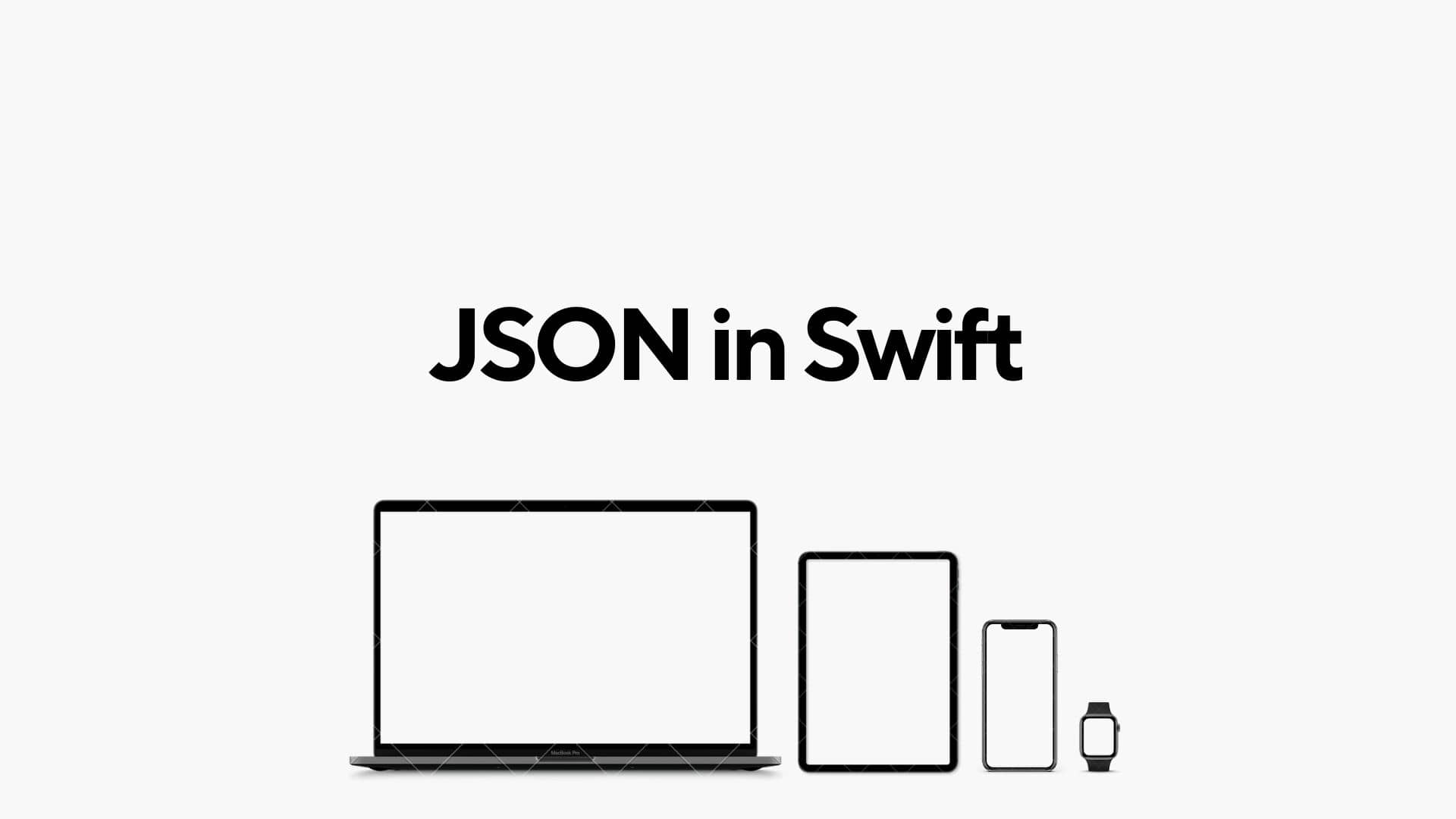JSON in Swift

As Apple developers, crafting seamless and dynamic iOS applications often involves interacting with external data sources. JSON (JavaScript Object Notation) has become a ubiquitous format for data exchange, and Swift provides robust support for working with JSON data. In this comprehensive guide, we'll explore the intricacies of working with JSON in Swift, from parsing to serialization, and provide practical insights to elevate your iOS development skills.
Understanding JSON in the Swift Context
JSON is a lightweight data interchange format that is easy for both humans and machines to read and write. In Swift, working with JSON involves two main tasks: parsing (converting JSON data into Swift objects) and serialization (converting Swift objects into JSON data). Let's delve into each aspect to gain a deeper understanding.
1. Parsing JSON in Swift: Transforming Data into Swift Objects
Swift provides a native way to parse JSON data into Swift objects using the JSONDecoder class. Assume we have the following JSON data representing a user:
{
"name": "John Doe",
"age": 28,
"email": "john.doe@example.com"
}
We can create a corresponding Swift struct or class to represent this data:
struct User: Codable {
let name: String
let age: Int
let email: String
}Now, let's parse the JSON data into a User object:
let jsonData = """
{
"name": "John Doe",
"age": 28,
"email": "john.doe@example.com"
}
""".data(using: .utf8)!
do {
let user = try JSONDecoder().decode(User.self, from: jsonData)
print(user)
} catch {
print("Error decoding JSON: \(error)")
}
The Codable protocol conformance in the User struct facilitates seamless conversion between JSON and Swift objects.
2. Handling Nested Structures and Arrays
JSON often involves nested structures and arrays. Swift's Codable protocol elegantly handles these scenarios. Consider a JSON array representing a list of users:
[
{
"name": "Alice",
"age": 30,
"email": "alice@example.com"
},
{
"name": "Bob",
"age": 25,
"email": "bob@example.com"
}
]
We can extend our User struct to accommodate an array of users:
struct UsersResponse: Codable {
let users: [User]
}
Parsing this array is as straightforward as decoding the JSON:
let jsonArrayData = """
[
{
"name": "Alice",
"age": 30,
"email": "alice@example.com"
},
{
"name": "Bob",
"age": 25,
"email": "bob@example.com"
}
]
""".data(using: .utf8)!
do {
let usersResponse = try JSONDecoder().decode(UsersResponse.self, from: jsonArrayData)
let users = usersResponse.users
print(users)
} catch {
print("Error decoding JSON array: \(error)")
}
3. Serialization: Converting Swift Objects to JSON
Serialization is the process of converting Swift objects into JSON data, a task Swift excels at with the JSONEncoder class. Let's reverse the process and convert a User object into JSON:
let user = User(name: "Jane Doe", age: 32, email: "jane.doe@example.com")
do {
let jsonData = try JSONEncoder().encode(user)
let jsonString = String(data: jsonData, encoding: .utf8)!
print(jsonString)
} catch {
print("Error encoding JSON: \(error)")
}
This process is especially useful when preparing data to be sent to a server or stored persistently.
4. Handling Dynamic JSON Structures
Sometimes, JSON structures may not precisely match our Swift models. Swift offers flexibility through the CodingKeys enum, allowing us to map JSON keys to Swift property names. Consider a JSON structure with snake_case keys:
{
"full_name": "Grace Hopper",
"years_of_service": 35,
"primary_email": "grace.hopper@example.com"
}
We can adapt our Swift model accordingly:
struct Employee: Codable {
let fullName: String
let yearsOfService: Int
let primaryEmail: String
private enum CodingKeys: String, CodingKey {
case fullName = "full_name"
case yearsOfService = "years_of_service"
case primaryEmail = "primary_email"
}
}
Swift's flexibility in handling key mappings ensures a smooth integration with diverse JSON structures.
5. Error Handling and Graceful JSON Processing
Robust error handling is crucial when working with external data. Swift's try, catch, and do statements provide a mechanism to handle errors gracefully. When parsing JSON, consider wrapping the decoding process in a do-catch block to capture and handle potential errors.
do {
let user = try JSONDecoder().decode(User.self, from: jsonData)
print(user)
} catch let decodingError as DecodingError {
print("Decoding error: \(decodingError)")
} catch {
print("An unexpected error occurred: \(error)")
}
Elevating iOS Development with Swift and JSON
In conclusion, mastering JSON handling in Swift is fundamental for crafting robust and flexible iOS applications. Swift's native support for JSON through the Codable protocol, JSONDecoder, and JSONEncoder classes empowers developers to seamlessly integrate external data into their apps. As you embark on your iOS development journey, harness the power of Swift's JSON handling capabilities, ensuring your apps are not only functional but also adept at efficiently handling diverse data sources. With these skills, you'll be well-equipped to create dynamic and data-driven experiences for users across the Apple ecosystem. Happy coding :)